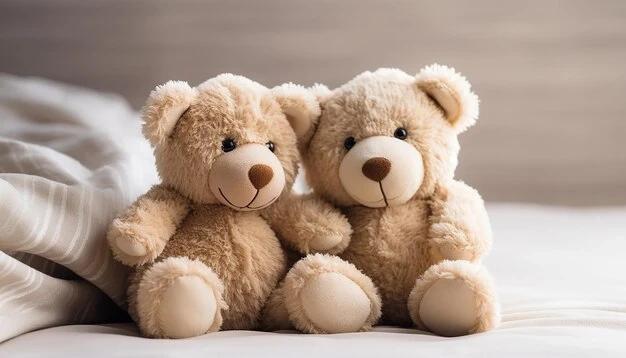Stuffed animals have been beloved companions for children and adults alike for many decades. Their soft, cuddly nature makes them perfect for comfort, play, and even collecting. If you’ve ever wondered about the different types of stuffed animals or asked yourself what are stuffies, this guide is for you. We’ll explore the wide variety of stuffed animals available, their unique features, and why they remain so popular worldwide.
What Are Stuffies?
First things first: what are stuffies? The term “stuffies” is a casual, affectionate nickname for stuffed animals or plush toys. It refers to any soft toy that is “stuffed” with a filling material, typically polyester fiberfill, beans, or cotton, to give it shape and cuddliness.
Stuffies can come in many shapes and sizes, from classic teddy bears to fantasy creatures and popular characters. They are often made from soft fabrics like plush, fleece, or velour, designed to be huggable and comforting. The term is especially popular among children and collectors as a fun way to refer to their cherished toys.
The Many Types of Stuffed Animals
Stuffed animals are not just limited to teddy bears. The category is diverse, offering a broad range of styles and designs. Let’s look at the most common types of stuffed animals you might find:
1. Traditional Stuffed Animals
These are the classic stuffed toys modeled after real animals such as bears, dogs, cats, rabbits, and elephants. Traditional stuffed animals usually have realistic or semi-realistic designs and are often made with soft plush fabric. They are the timeless companions many of us grew up with.
2. Plushies
Plushies are a type of stuffed animal known for their ultra-soft plush fabric and cute, often stylized appearance. They may have exaggerated features like big eyes or oversized heads to increase their “cute” factor. Plushies include a variety of animals and fantasy creatures and are popular among both children and collectors.
3. Beanie Stuffed Animals
Beanie stuffies incorporate small plastic pellets or beans in their stuffing, which makes them flexible and able to sit upright more easily. These were popularized by Ty Beanie Babies, which became a massive collectible craze. Beanie animals have a unique tactile feel compared to traditional fiber-filled stuffies.
4. Handmade Stuffed Animals
Handmade stuffies are crafted by artisans or hobbyists. These can be one-of-a-kind creations made with various materials, sometimes featuring embroidery, buttons, or unique fabrics. Handmade stuffed animals often carry special sentimental value and are prized by collectors.
5. Character Stuffed Animals
These are plush toys modeled after popular characters from movies, TV shows, books, or video games. Examples include Disney princesses, superheroes, Pokémon, and anime figures. Character stuffies often become collectibles because of their connection to beloved franchises.
6. Interactive Stuffed Animals
Thanks to advances in technology, some stuffed animals are now interactive. These stuffies can talk, sing, respond to touch, or even move. They combine the traditional softness of stuffed toys with electronic features to enhance playtime.
7. Specialty Stuffed Animals
Some stuffed animals are designed for specific purposes, such as therapeutic use. Weighted stuffed animals, for example, can help reduce anxiety or provide comfort to people with sensory processing disorders. These specialty stuffies blend comfort with function.
Materials Used in Stuffies
Stuffed animals are made from various fabrics and fillings. The most common outer fabrics include plush, fleece, velour, and sometimes synthetic fur. Inside, polyester fiberfill is the most popular stuffing because it’s soft, lightweight, and washable. Some stuffies include plastic pellets or beans for added weight and flexibility.
Why Stuffies Are So Popular
Stuffies provide emotional comfort, companionship, and a sense of security. For children, they are often first friends and playmates. For adults, stuffies can bring nostalgia, stress relief, or serve as collectibles. The soft texture and huggable design make stuffies timelessly appealing.
How to Choose the Right Stuffed Animal
When selecting from the many types of stuffed animals, consider:
- Age appropriateness (avoid small parts for toddlers).
- Purpose (play, collection, therapy).
- Material quality and care instructions.
- Design preference — realistic vs. stylized, character vs. animal.
Caring for Your Stuffies
To keep stuffies soft and clean:
- Spot clean regularly with mild soap and water.
- Machine wash on gentle cycle if allowed (check tags).
- Air dry completely to prevent mold.
- Store in a clean, dry place away from direct sunlight.
Conclusion
Now that you know what are stuffies and the many available, you can better appreciate the variety and charm these toys offer. Whether you’re buying for a child, starting a collection, or just curious, stuffed animals remain an enduring source of comfort and joy across generations.


